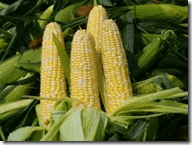 If your corn’s got enough water during these dog days of summer, the 90-plus-degree temperatures shouldn’t be too damaging. But, if you’re on the dry side, it’s a bad time of year for your corn to be feeling the kind of stress the current heat dome is creating.
If your corn’s got enough water during these dog days of summer, the 90-plus-degree temperatures shouldn’t be too damaging. But, if you’re on the dry side, it’s a bad time of year for your corn to be feeling the kind of stress the current heat dome is creating.
"Afternoon temperatures in the mid-90s are not a problem for corn and soybean plants if they have enough soil water available. In experiments, plant temperatures have been raised to 110 or higher without doing direct damage to photosynthetic capacity," says University of Illinois Extension agronomist Emerson Nafziger. "The level required to damage leaves depends on the temperature the leaf has experienced before, but it generally takes temperatures above 100 in field-grown plants."
But, with temperatures like they have been lately, moisture isn’t always the best thing for the crop, especially at night. Over the last week or so, overnight temperatures haven’t dropped as much as usual. Add higher-than-normal humidity to those higher nighttime temps and it actually causes more trouble, Nafziger says.
"Because daytime temperatures are typically at or above the 86-degree cutoff for GDD calculations, high night temperatures are the direct cause of higher-than-normal GDD accumulations. High night temperatures mean larger losses of sugars to respiration at night, and so less sugar available to fuel crop growth. We don’t know precisely what percentage of the sugars in the plant might be lost at different night temperatures, but we certainly expect higher losses at higher temperatures," Nafziger says. "This is a drag on growth rates because the plant has to produce extra sugar just to keep up. When high night temperatures occur at the time of seed setting, as is the case this year, there is likely some negative effect on final seed numbers and yield.
"High humidity means higher night temperatures, and so contributes to that problem. Relative humidity drops as temperatures rise in the morning, and this helps the air pull water vapor out of the leaf through stomata. While water loss is faster at lower relative humidity, air at 50% relative humidity (a high afternoon value) is a strong draw, and lowering it may not increase demand as much as factors like wind speed," he adds. "High relative humidity and low wind speed slow drying of leaves in the morning and may contribute to spread of foliar diseases."
Though the current weather’s stressful, don’t be too quick to assess yield losses quite yet. After a stretch of hot, dry weather, corn plants are better able to utilize the water that is available. So, if and when the weather eventually does improve, your crop could recover fairly well.
"As crops cope with ongoing heat and dry weather, a persistent question is how long the crop can hold out without rain before it starts to lose yield. Cooler temperatures extend this period because they bring a drop in water use rates, thereby increasing the likelihood of rain before serious damage occurs," Nafziger says. "But statements like ‘we need rain by [date]’ or ‘we’re losing [X] bushels per day without rain’ are mostly guesswork; we can recognize changes in leaf appearance that signal a drop in photosynthesis, but we can’t be very exact."
http://www.agriculture.com/news/crops/dont-jump-to-heat-conclusions_2-ar17802

Deprecated: strpos(): Passing null to parameter #1 ($haystack) of type string is deprecated in /home/agriviek8Qv/agriviet.net/public_html/wp-includes/comment-template.php on line 2522